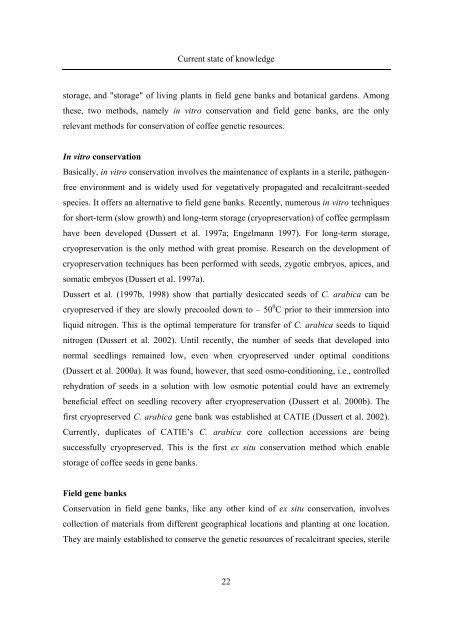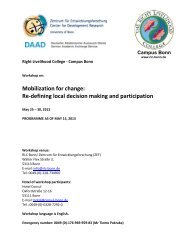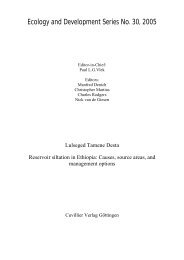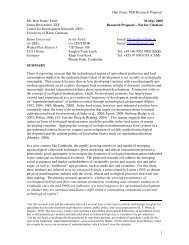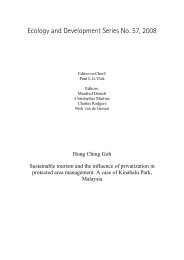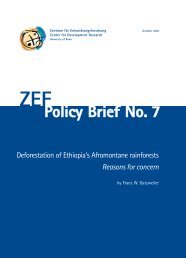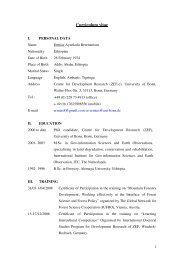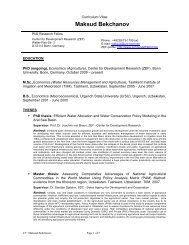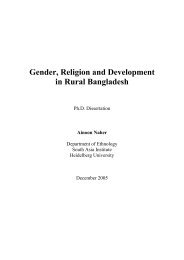Ecology and Development Series No. 10, 2003 - ZEF
Ecology and Development Series No. 10, 2003 - ZEF
Ecology and Development Series No. 10, 2003 - ZEF
- No tags were found...
You also want an ePaper? Increase the reach of your titles
YUMPU automatically turns print PDFs into web optimized ePapers that Google loves.
Current state of knowledgestorage, <strong>and</strong> "storage" of living plants in field gene banks <strong>and</strong> botanical gardens. Amongthese, two methods, namely in vitro conservation <strong>and</strong> field gene banks, are the onlyrelevant methods for conservation of coffee genetic resources.In vitro conservationBasically, in vitro conservation involves the maintenance of explants in a sterile, pathogenfreeenvironment <strong>and</strong> is widely used for vegetatively propagated <strong>and</strong> recalcitrant-seededspecies. It offers an alternative to field gene banks. Recently, numerous in vitro techniquesfor short-term (slow growth) <strong>and</strong> long-term storage (cryopreservation) of coffee germplasmhave been developed (Dussert et al. 1997a; Engelmann 1997). For long-term storage,cryopreservation is the only method with great promise. Research on the development ofcryopreservation techniques has been performed with seeds, zygotic embryos, apices, <strong>and</strong>somatic embryos (Dussert et al. 1997a).Dussert et al. (1997b, 1998) show that partially desiccated seeds of C. arabica can becryopreserved if they are slowly precooled down to – 50 0 C prior to their immersion intoliquid nitrogen. This is the optimal temperature for transfer of C. arabica seeds to liquidnitrogen (Dussert et al. 2002). Until recently, the number of seeds that developed intonormal seedlings remained low, even when cryopreserved under optimal conditions(Dussert et al. 2000a). It was found, however, that seed osmo-conditioning, i.e., controlledrehydration of seeds in a solution with low osmotic potential could have an extremelybeneficial effect on seedling recovery after cryopreservation (Dussert et al. 2000b). Thefirst cryopreserved C. arabica gene bank was established at CATIE (Dussert et al. 2002).Currently, duplicates of CATIE’s C. arabica core collection accessions are beingsuccessfully cryopreserved. This is the first ex situ conservation method which enablestorage of coffee seeds in gene banks.Field gene banksConservation in field gene banks, like any other kind of ex situ conservation, involvescollection of materials from different geographical locations <strong>and</strong> planting at one location.They are mainly established to conserve the genetic resources of recalcitrant species, sterile22


